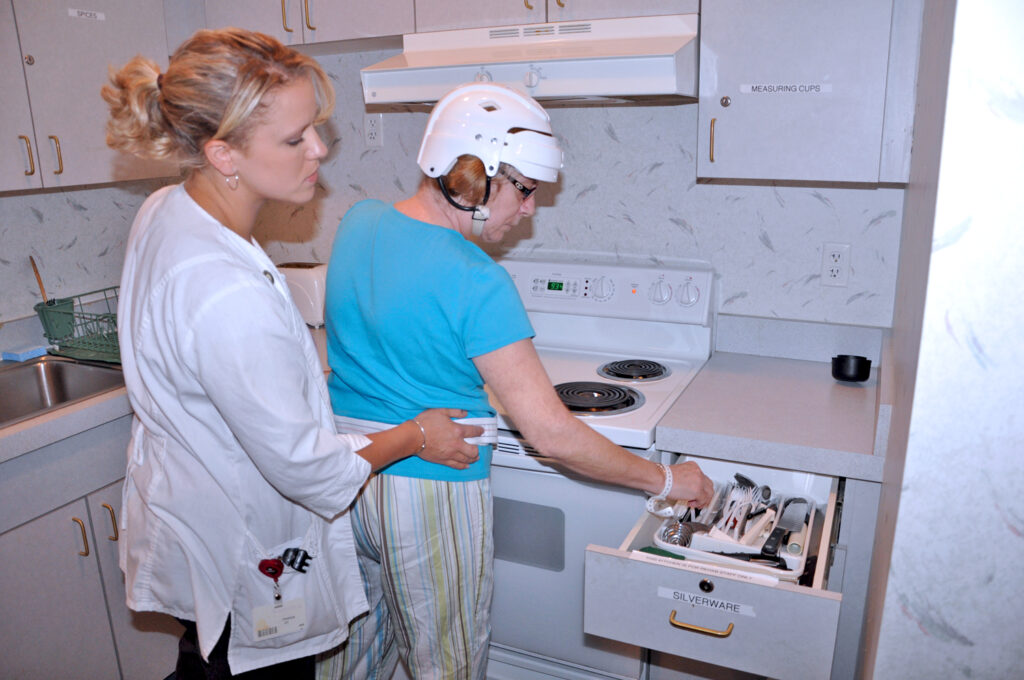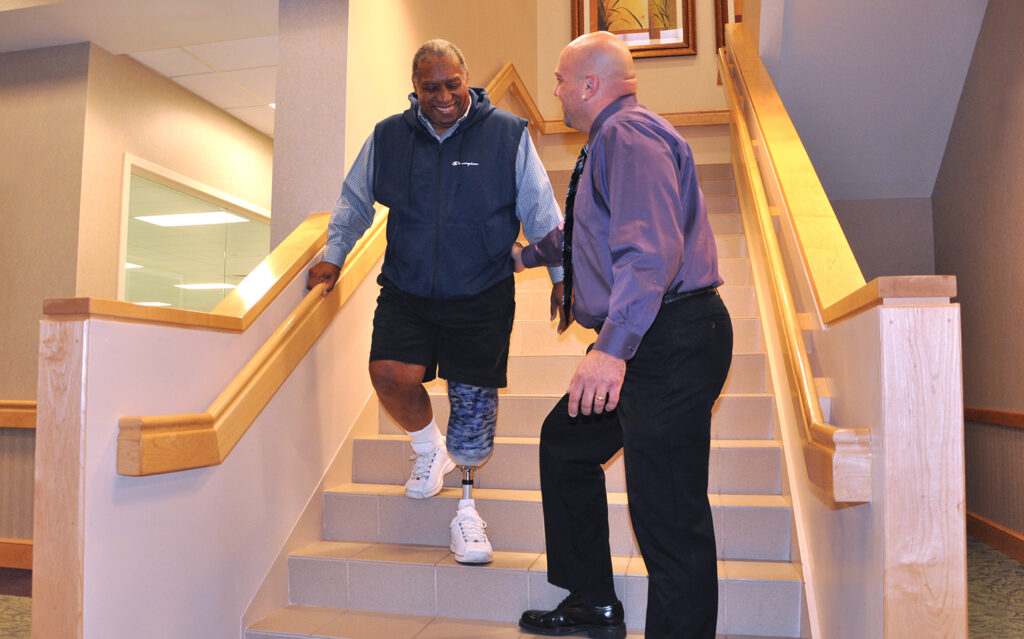Whittier Health Network
Physical Therapy At Whittier
Whittier’s dedicated Physical Therapists (PTs) evaluate and develop a treatment plan to improve overall function in areas such as bed mobility, transfers, and ambulation. Their skills assist patients in achieving increased physical mobility and function, increased range of motion (ROM), decreased pain, and improved safety awareness through various treatment techniques, modalities, and patient education.
Who benefits from physical therapy?
Anybody who experiences limitations in their function can benefit from Physical Therapy. “PTs work to improve a person’s mobility and quality of life, and they provide education to prevent further injury or disability.” Physical Therapists work with all ages, from pediatric to older adults. Physical Therapists can tailor their treatment program to address problems such as decreased ROM and contractures, decreased strength, pain, and balance issues that may cause falls.
How does physical therapy help people?
People with physical limitations affecting their quality of life can enjoy improved day-to-day living when they receive high-quality physical therapy. At Whittier, we take care of patients on their journey to recovery and help them reclaim their lives after severe illnesses and injuries.
 Personalized physical therapy activities
Personalized physical therapy activities
Each Whittier patient receives a customized care plan, from those receiving care in our high-intensity medical units to our home care consumers. An individualized treatment regimen promotes meaningful activities for patients and their lives.
The initial PT evaluation will consist of a review of medical diagnoses, a brief interview, current physical ability, and the development of treatment goals. This in-depth examination drives the PT’s therapeutic activities to promote the maximum level of function for patients to live their best lives.
Therapeutic interventions
Physical therapists have a wide range of modalities in their toolboxes to meet various patient needs. Exercise and strengthening programs are individualized to challenge patients, starting at the most basic level and progressing in complexity as patients gain strength, endurance, and function throughout their stay.
Patients will participate in guided activities from rolling side to side, to sitting at the edge of the bed, to standing, all while PT’s monitor vitals and provide encouraging words, tactile cues and assistance to promote success at each interval.
Whittier’s Physical Therapists are an integral part of the patient’s health care team, prescribing positioning and mobility schedules to prevent and manage wounds and potential injuries from prolonged immobility. PT’s assess and provide proper seating — including specialty wheelchairs and cushions—and often facilitate bracing, orthotics and other devices to avoid contracture. These interventions are key in the prevention and treatment of wounds while patients regain function and independence.
Read more about Whittier’s Wound Clinic.
Many older adults sustain injuries due to falls. Injuries like fractures and bumps to the head cause most hospitalizations and surgeries in this population; overall physical health is affected by the loss of mobility that comes with being confined to bed. PT helps them stay safe and healthy by using fall-prevention interventions such as gait training to help the person walk with or without an assistive device (AD) like a walker. They learn and practice skills to manage high-risk situations, such as transferring from a wheelchair to a bed.
Patients gain muscle mass, strength, and function through various therapeutic exercises including weight and resistance training. The therapist chooses activities based on the patient’s ability to participate.
Throughout a patient’s PT program, functional balance, overall strength and activity participation are challenged and progressed. From retraining muscles using weights, bikes, standard and anti-gravity treadmills and other therapeutic exercises, to high level dynamic activities, including gait and stair training, PT’s choose meaningful tasks to promote independence and knowledge.
Whittier Way
Whittier’s two acute rehabilitation hospitals in Bradford and Westborough each have a unique setting for our Physical and Occupational Therapists to help patients progress and practice personal care tasks and everyday skills in a controlled indoor environment.
“Whittier Way” is a realistic community re-entry area that offers:
- A full-size automobile, curbs, and ramps to help patients to regain skills in driving and mobility
- A grocery store with realistic aisles and carts
- A simulated golf green
- A functioning movie theater
- An activities of daily living (ADL) apartment
 The ADL apartment is one of the most important features, allowing Whittier therapists to help patients practice cooking, washing dishes, laundry, and bed-making, all of which are needed for a successful return to daily living.
The ADL apartment is one of the most important features, allowing Whittier therapists to help patients practice cooking, washing dishes, laundry, and bed-making, all of which are needed for a successful return to daily living.
This unique indoor rehabilitation concept assists our rehabilitation teams in helping patients progress toward their goals and restoring as fully as possible the skills, confidence, and independence our patients need to return to a quality, satisfying life.
Whittier’s physical therapists are a crucial part of the inpatient and outpatient therapy treatment teams. Our objective is to help you get back to your best life!

 Personalized physical therapy activities
Personalized physical therapy activities